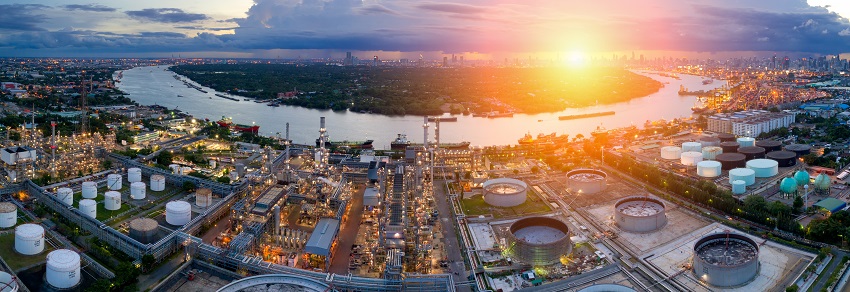
Oil Refining Landscape to Resume Transformation in 2023 After Hiatus – S&P Global
The metamorphosis of global refining will likely resume in 2023, after a pause in 2022 and changing the shape of crude and product flows.
New oil refineries are set to come online in the East and old refineries will likely be converted into greener processing plants in the West, according to data from S&P Global Commodity Insights.
That will restart a trend seen in 2020 and 2021 that saw a flurry of closures and conversions — amounting to around 4 million b/d of refining capacity — predominantly in the Atlantic Basin.
“With the start-up of new refineries including mega-refineries in the Middle East and Asia, changes in crude and product trade flows are expected in 2023,” S&P Global oil analyst Rasool Barouni said.
“Sanctions of Russian oil product exports and China’s product export quotas will impact the global trade flows next year.”
The first phase of Kuwait’s new 615,000 b/d Al Zour refinery started in November 2022, and it exported its first naphtha, low sulfur fuel oil and jet fuel in the second half of November. The start-up of the first unit will be followed by the second and third units to reach full capacity next year, Barouni noted.
The commissioning and ramping up of other refineries in the Middle East including Saudi Arabia’s 400,000 b/d Jazan refinery, Iraq’s 140,000 b/d Karbala refinery and Oman’s 230,000 b/d Duqm refinery will increase the region’s crude runs to 9.30 million b/d in 2023, S&P Global estimated, predicting gross exports of major oil products, including gasoline, gasoil, kerosene/jet, and fuel oil, will increase to 3.37 million b/d early next year.
Once the long-awaited start of its hydrocracker comes into effect, Saudi Arabia’s 400,000 b/d Jazan refinery, which has been gradually coming online since late 2021, will fill the void in Europe left by Russian diesel exports.
Russian diesel is likely to travel to the Middle East, where it will be blended with regional material before being shipped back to Europe, analysts suggested.
“However, this may have an impact on diesel prices in the Middle East and Asia. European diesel stocks have been replenished in recent months, but sanctions against Russia could tighten the Atlantic Basin distillate market once again at least for a short period of time,” Refinitiv’s lead oil analyst Ehsan Ul-Haq said.
China
Two new plants in China will achieve full capacity in 2023.
After initially planned start at the end of 2021, China’s 320,000 b/d Shenghong Petrochemical complex commenced commercial operations in November.
In October, another greenfield refinery in China, the 400,000 b/d Guandong Petrochemical, started trial runs.
The two plants have helped boost global refinery throughput in November, the International Energy Agency said in its December report.
Over the next two years, China could see the start-up of two more refineries: the 400,000 b/d Yulong Petrochemical plant and the 300,000 b/d Huajin Aramco Petrochemical complex.
China’s Shenghong and Guandong as well as Malaysia’s 300,000 b/d Pengerang Integrated Complex in the Johor state, which finally resumed operations in May, following an incident in 2020, have also added to global refining capacity.
China will likely increase key product exports, particularly gasoline and kerosene/jet.
Africa
Elsewhere, the commissioning of Nigeria’s 650,000 b/d Dangote refinery was expected next year, though analysts remained skeptical given the project has experienced delays before.
Africa’s long-awaited ‘game changer’ should reduce Nigeria’s need for products imports. The country may actually be able to stop gasoline imports by the second half of next year if so, according to Nigerian National Petroleum Corp.
Also in Africa, a 40,000 b/d complex is getting close to being commissioned in Ghana, which will potentially help the country steer away from fuel imports on which it is now fully reliant due to ongoing problems with the 45,000 b/d Tema refinery.
“New refineries in the Middle East will result in more diesel supply for Asia and Europe in the medium term and Europe could transition from an undersupplied to an oversupplied market,” Ul-Haq said.
“The opening of Dangote’s refinery in Nigeria next year may tighten the light sweet market, particularly in the Mediterranean, while India may need to import more crude from the Caspian region and North Africa instead of West Africa.”
Europe’s green shift
In 2023, Italy’s Eni is likely to launch the transformation to a biorefinery of its Livorno site if it is to achieve the planned completion of construction by 2025.
Meanwhile, France’s Grandpuits is on track to be converted to a zero-oil platform in 2024 and start producing sustainable aviation fuel.
However no other imminent conversion plans are on the cards in Europe with Finland’s Neste exploring a switch of its Porvoo refinery to “non-crude oil refining” as far ahead as the mid-2030s.
Refineries in Japan are also proceeding with planned closures. ENEOS has cut the capacity of the Wakayama sole CDU before decommissioning it in October 2023. The company will also decommission secondary units at its Negishi plant which are attached to the taken out of service this year N0. 1 CDU.
By S&P Global, December 27, 2022
